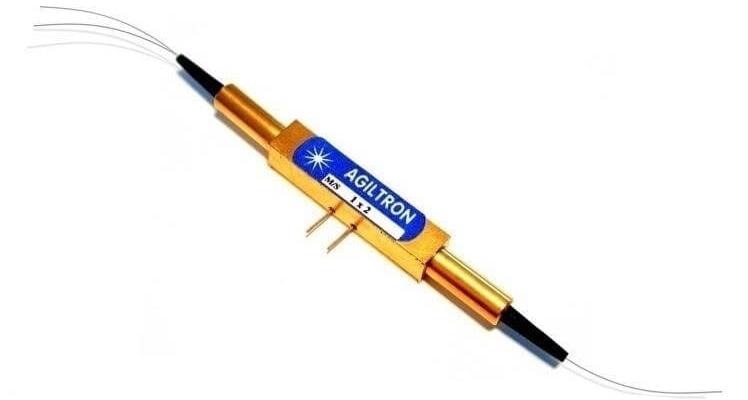Highspeed fibre optic switches benefit from non-mechanical operation. They are based on electro-optic technology and are highly reliable with no moving parts and organic materials in the light path. Configurations available are 1×1, 1×2, 1×4 and 2×2, etc, in both polarisation-independent and polarisation-maintaining versions, with ultra-fast switching in the region of 10 ns, and rise/fall times around 8 ns up to 3 MHz rate. Switches are vibration insensitive and ultra-high reliability 10^14.

Image Credit: Laser Components (UK) Ltd.
This highspeed switch family features ultra-low loss (<1dB), bi-directional, covering wavelengths from 500 nm to 2000 nm. They are polarisation insensitive and high extinction versions are available in dual stage configuration. Features also include high optical power handling up to 10 W, and a wide operating temperature range (-50 °C to +90 °C).
Switches are categorised into “ultra-fast” with a response (<5 ns rise/fall, up to 1 MHz repetition) or (4 ns rise, up to 1 Mhz repetition), “premium” with a response (<50 ns rise/fall, up to 1 MHz repetition) and “standard” with a response (<100 ns rise/fall, up to 500 KHz repetition).
The high-speed switch family range includes a polarisation switch (fast and reliable), optical shutter 1 x 1 (high extinction), multimode fibre switch 1 x 2, 90 deg polarisation switch (device dynamically controls the optical phase of the transmitting light) and switchable fibre optic splitter/coupler (100 ns rise/fall). The switchable fibre optical splitter, in 1×2 format, splits an incoming optical signal into two output optical fibres with the capability of switching between two splitting ratios.
Switch drivers are available to match the high-speed family of switches - high speed, high repetition, high output voltage and push-pull output design to ensure fast switching times for rise and fall edges. They are designed to drive a capacitive load which makes them ideal to drive the electro-optical switches. They have low power consumption and TTL/CMOS control.
Further information: https://www.lasercomponents.com/uk/fiber-optics/active-passive-components/optical-switches/